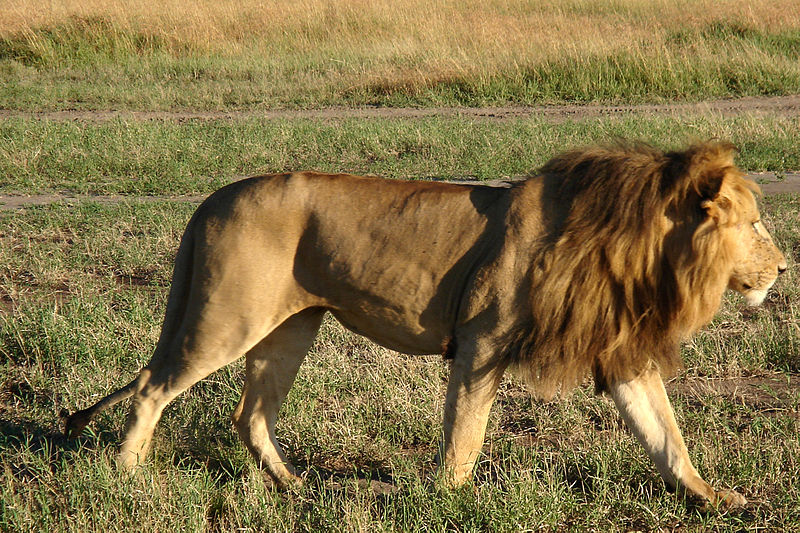South Africa’s Department of Environmental Affairs has released for public comment its first-ever Biodiversity Management Plan for lions titled Panthero Leo.
The proposed plan is outlined in the government’s vision for the South African lion population. While African range lions have declined over the last several decades, especially in west and east Africa and in southern Africa, where they were extirpated from most of their range by the 1900s, South Africa’s lion populations have not only stabilized but are increasing – by 30 percent over the last three decades, pointing to healthy indicators in their lifecycle. This counter-trend, according to the plan, is “because all lions in South Africa are within largely adequately fenced reserves with sufficient management budget.”
Although wild lion population numbers are dropping across the continent, the Department of Environmental Affairs recommends that lions in South Africa be downgraded on the IUCN’s Red List of Threatened Species from the current classification of Vulnerable to extinction to a classification of Least Concern.
There are currently 2,300 wild lions in the various national parks and 800 “managed wild” lions in smaller reserves, according to the Biodiversity Management Plan.
The plan recommends downlisting because there are about 1,600 mature individual lions in South Africa, and it maintains that when the population of mature wild lions tops 1,500 individuals, the IUCN’s Red List should change the status of the species.
The Biodiversity Management Plan also takes into account that there are around 6,000 captive-bred lions throughout the country, bred “exclusively to generate money” and that the captive breeding and subsequent release for hunting of captive bred lions remains legal. South Africa is the only country in the world that has three classifications for lions: wild, managed wild and captive bred.
“The management of these lions,” says the Department of Environmental Affairs, “is challenging, with high growth rates necessitating appropriate population regulation.”
The Biodiversity Management Plan views a legal trade in lion bones as an economically viable activity and hopes to “promote sustainable legal trade in lions and lion products” using a regulated permit system. The sale of lion products, especially lion bones, offers breeders a way of boosting their earnings. A breeder can get paid anywhere from US$5,000 to US$25,000 per lion shot, but can boost his earnings by selling a lion skeleton, worth between $1,000 and $2,000 to a Chinese dealer in Durban or Johannesburg. The skeleton, once boiled down and bottled in Asia could reach a value exceeding whopping US$20,000.
The public is invited to comment on the lion Biodiversity Management Plan before May 17.
The proposed plan is outlined in the government’s vision for the South African lion population. While African range lions have declined over the last several decades, especially in west and east Africa and in southern Africa, where they were extirpated from most of their range by the 1900s, South Africa’s lion populations have not only stabilized but are increasing – by 30 percent over the last three decades, pointing to healthy indicators in their lifecycle. This counter-trend, according to the plan, is “because all lions in South Africa are within largely adequately fenced reserves with sufficient management budget.”
Although wild lion population numbers are dropping across the continent, the Department of Environmental Affairs recommends that lions in South Africa be downgraded on the IUCN’s Red List of Threatened Species from the current classification of Vulnerable to extinction to a classification of Least Concern.
There are currently 2,300 wild lions in the various national parks and 800 “managed wild” lions in smaller reserves, according to the Biodiversity Management Plan.
The plan recommends downlisting because there are about 1,600 mature individual lions in South Africa, and it maintains that when the population of mature wild lions tops 1,500 individuals, the IUCN’s Red List should change the status of the species.
The Biodiversity Management Plan also takes into account that there are around 6,000 captive-bred lions throughout the country, bred “exclusively to generate money” and that the captive breeding and subsequent release for hunting of captive bred lions remains legal. South Africa is the only country in the world that has three classifications for lions: wild, managed wild and captive bred.
“The management of these lions,” says the Department of Environmental Affairs, “is challenging, with high growth rates necessitating appropriate population regulation.”
The Biodiversity Management Plan views a legal trade in lion bones as an economically viable activity and hopes to “promote sustainable legal trade in lions and lion products” using a regulated permit system. The sale of lion products, especially lion bones, offers breeders a way of boosting their earnings. A breeder can get paid anywhere from US$5,000 to US$25,000 per lion shot, but can boost his earnings by selling a lion skeleton, worth between $1,000 and $2,000 to a Chinese dealer in Durban or Johannesburg. The skeleton, once boiled down and bottled in Asia could reach a value exceeding whopping US$20,000.
The public is invited to comment on the lion Biodiversity Management Plan before May 17.





